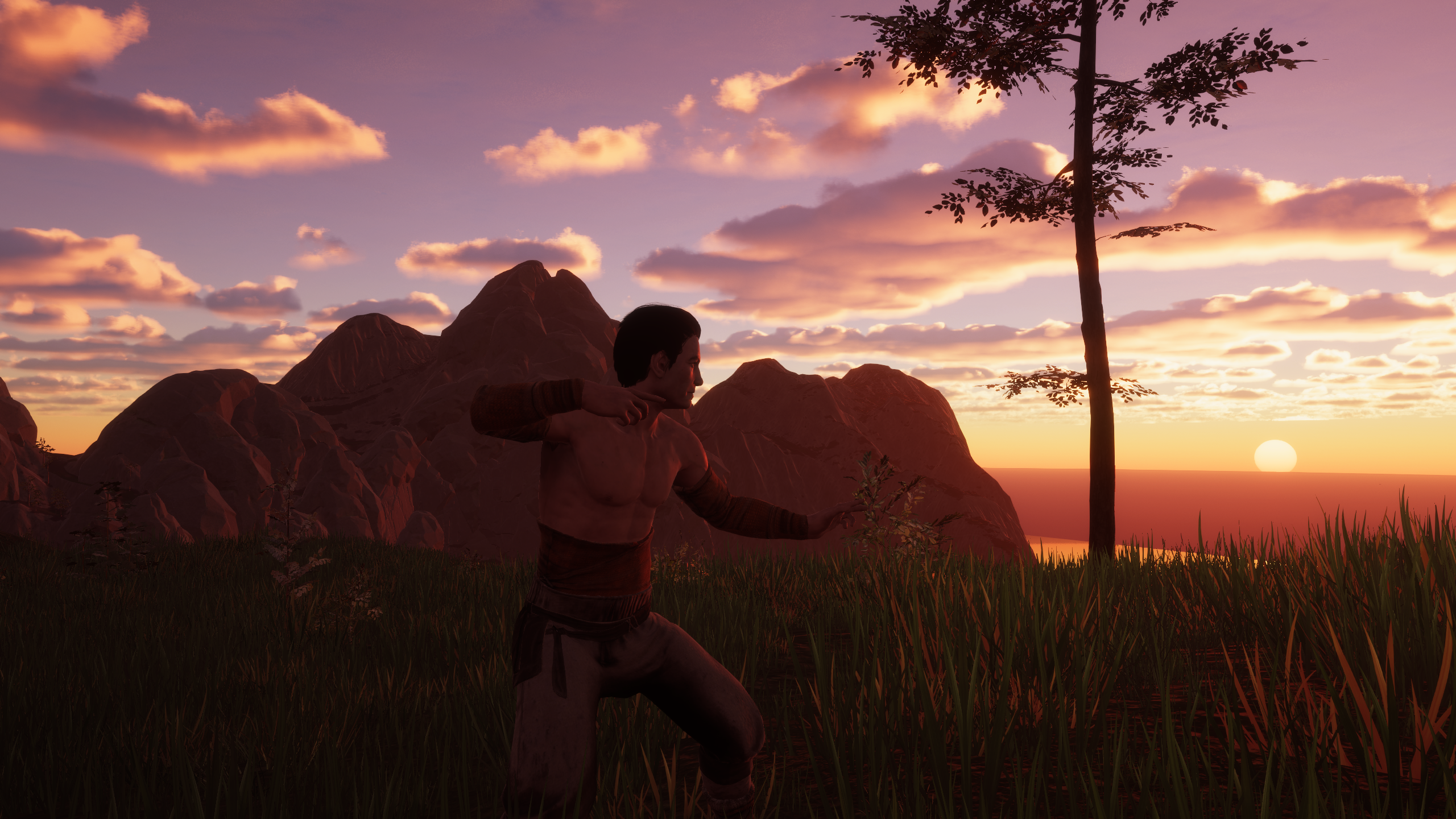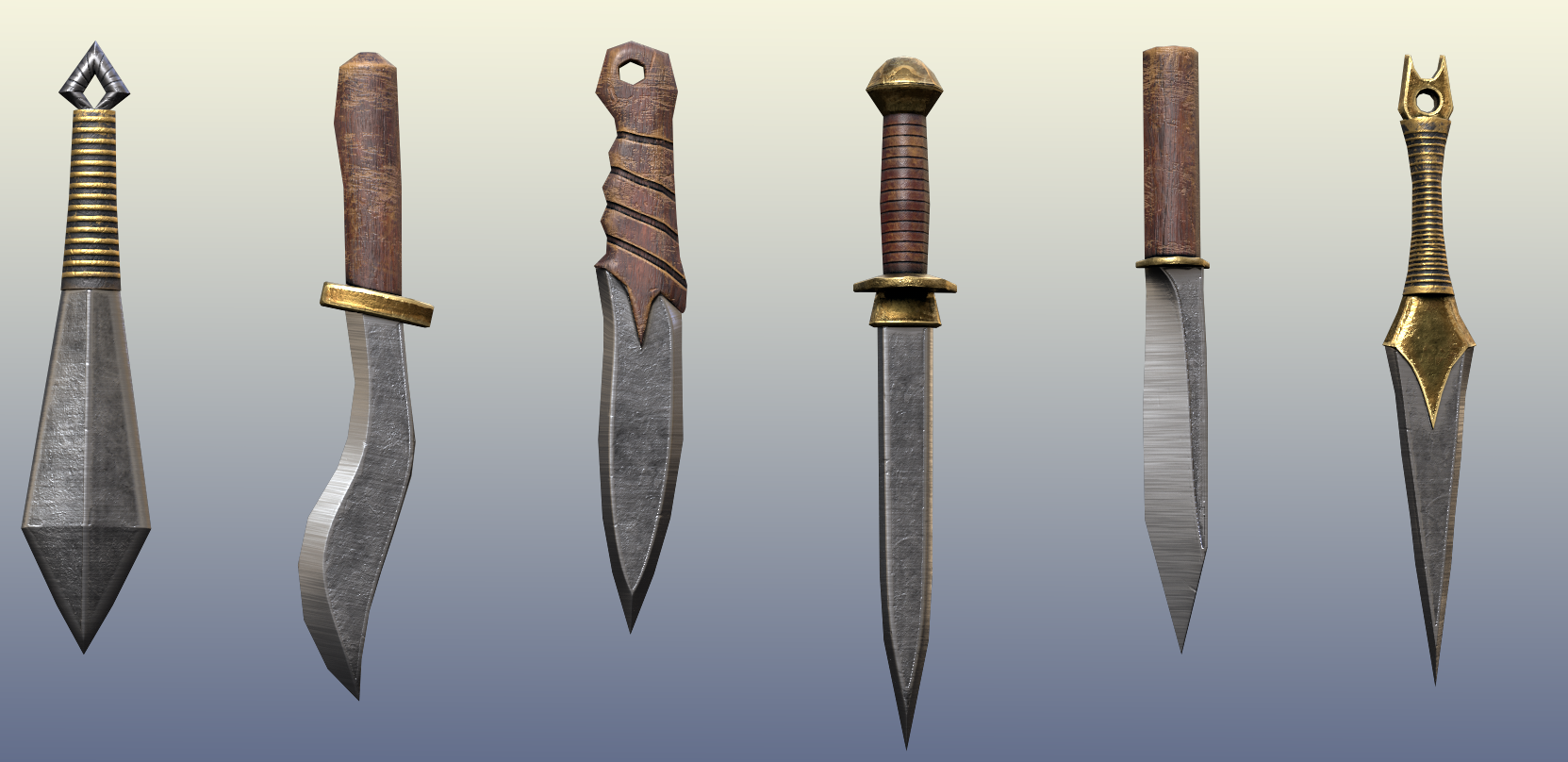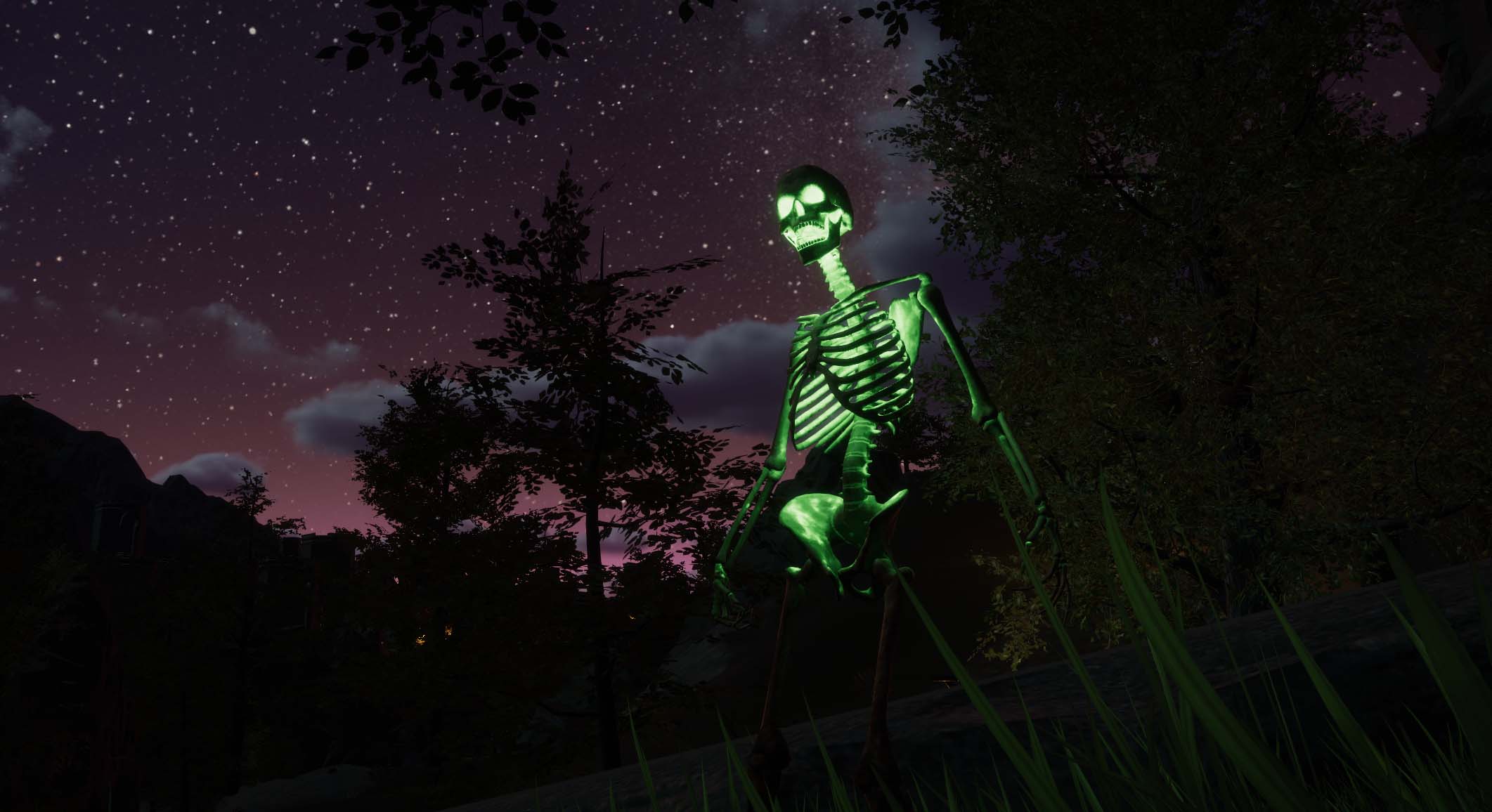Pantheon: One Year Later Part 2
It’s hard to believe that it’s already been over a year (or only a year, depending on your perspective) since the last time we shared Pantheon with our pre-alpha testers. Through streams, roundtables, and VIP discussions we’ve shared much and more about the many changes that Pantheon has undergone in that time. There’s nothing like a good old consolidated infodump however, so to celebrate our progress to date we present to you, our community, Pantheon: One Year Later.
Due to the sheer volume of information, we’ve decided to break this segment into three parts:
• First is a high-level overview of Upgrades and New Features.
• Next, we take a deep dive into our Combat System Enhancements.
• Last, but certainly not least, we take a look at a consolidated year’s worth of Patch Notes.
Click any of the links above to navigate or on the link at the bottom of the page to go to the next page.
Combat Enhancements
Not to be confused with an entirely New Game Experience, our design team has spent much of the past year reviewing and refining the underlying formulas for combat in Pantheon in pursuit of a more tactical experience.
Some of our focal points in this endeavor include increasing the prominence of auto-attacks in relation to core abilities, enhancing the feel of stats, buffs, and debuffs, enabling degrees of delayed decision-making to facilitate communication, and further diversifying the gameplay experience between individual classes and – more explicitly – the differing roles such as casters and melee.
Below are highlights of the most significant changes made, and what testers can expect from the updated experience:
• The methods used to determine the potency of spells and abilities have been revised to facilitate longer-term scaling. As a result, ability lines have been deprecated. Although some spells continue to offer more potent alternatives at later levels, these are treated as their own abilities and may be assigned to the limited action set in tandem with their less (or more) powerful counterparts.
• The methods used to determine the contributions of Armor and Weapons have been revised to create more tangible results when upgrading.
• The contributions of attributes have been revised to provide more tangible effects from starting attribute allocations, as well as the equipment and abilities that affect these attributes.
• The governing formulas for Hit, Dodge, Block, Parry, Counter-Attack, and Critical combat results have been adjusted to increase the frequency and potency of these variable combat outcomes.
• The systems for Blocking and Shield Mitigation have been revised. Block events are no longer complete damage mitigations; instead, various shield types have been introduced each with their own block rating (the likelihood in which a block event will trigger) and mitigation value (the percent by which incoming damage is reduced), which can be further augmented through stats, abilities, and traits.
• Player spellcasting may now be interrupted by incoming melee attacks, relative to a degree of factors both in and outside of the player’s ability to manipulate.
• The Agility attribute now reduces the chance to be Critically Hit in combat, in addition to increasing Dodge and Parry ratings.
With the highlights out of the way, let’s break down the specifics of what has changed!

Core Attributes and Resources
• The starting stats for player races have been updated to reflect different innate strengths and weaknesses.
• The total points (2) that may be spent to raise attributes during character creation remains unchanged.
• The growth rate for Health and Mana pools has been adjusted to result in smaller increases over the span of leveling, and reduce the gap between low-health and high-health class/race combinations. This change allows us to better balance the difficulty curves between levels, put greater emphasis on the role of armor, and drive more interesting choices around which mana-costing abilities to use and when.
• In order to promote conscientious resource management and situational awareness, the mechanism and rate at which players recover Health and Mana outside of combat has been adjusted. Players will regenerate small amounts of Health and Mana passively while out-of-combat, but must sit to rest and regenerate at an accelerated rate. The longer players remain resting, the more quickly they will recover Health and Mana.
• When in-combat, a 10-second delay is applied before players enter the rested state.
• Interrupting the rested state by standing or being attacked will reset the rate of regeneration.
• The role of food has been adjusted. Food items are now consumed to gain long-duration buffs, some of which will increase the rate of health and mana recovery while resting.
• The roles of core attributes and their universal benefits have been redefined. Note that some attributes will continue to provide specific sub-benefits for certain abilities:
•Strength
• Increases the potency of outgoing melee and ranged attacks.
• Increases the amount of damage mitigated by successful Block events.
•Stamina
• Partially contributes to total Health.
• Reduces the rate at which Endurance is consumed by related activities such as Climbing and Sprinting.
• Reduces the chance for spellcasting to be interrupted by incoming melee attacks.
•Constitution
• Partially contributes to total Armor.
• Partially contributes to outgoing spell healing.
• Partially increases starting Acclimation values.
• Partially contributes to Resistance ratings.
•Agility
• Decreases the accuracy of incoming melee and ranged attacks.
• Increases chance to Dodge and/or Parry
• Decreases the chance to be Critically Hit by incoming melee and ranged attacks.
•Dexterity
• Increases the accuracy of outgoing melee and ranged attacks.
• Increases the chance to Critically Hit with outgoing melee and ranged attacks.
•Intellect
• Increases outgoing spell damage.
• Partially contributes to outgoing spell healing.
• Partially contributes to a chance to reduce incoming spell damage.
•Wisdom
• Partially contributes to total Mana.
• Partially contributes to the rate at which skill-ups may be obtained.
•Charisma
• Charisma functionality has yet to be fully added, but below are our intended goals for Charisma under this system:
• Contributes to the rate at which Faction is gained and lost.
• Contributes to the buying and selling prices of vendors.
• Contributes to the potency of certain controlling effects.
Skills
Skills have received their initial implementation, and characters should now see skill-up events when performing relevant actions or activities.
• The rate at which characters skill-up is determined by their current skill level compared to their maximum possible skill level, as well as the target of their action. Higher level targets will generally yield more frequent skill gains than lower-level targets.
• In order to introduce more frequent character progression and allow us to more intimately tune the rate of progression, skill-up events are broken up into incremental gains.
• Currently these gains are randomized, but will be affected by similar factors as the frequency of skill-ups at a later date.
• In order to further differentiate classes, certain combat-centric skills now have different skill caps depending on a player’s class. For example, Rogues are the most proficient with Daggers out of any class, allowing them to reach a Skill Ceiling of 150 at level 50, whereas Enchanters are lowly proficient, with a maximum Skill Ceiling of 132.
• Skills which adhere to this diversification are classified into one of five tiers, with corresponding skill caps at maximum level:
• Tier V: 150
• Tier IV: 144
• Tier III: 138
• Tier II: 132
• Tier I: 126

Weapon Type Consolidation
Weapon Types have been consolidated into broader categories. This allows for similar-yet-distinct weapons to benefit from the same Skill and execute the same Techniques, and ensures that we are not creating an undue burden on players to maintain skill levels across their available weapon types.
The new Weapon Skills / Types and their corresponding Weapons are as follows:
• Hand to Hand
• Unarmed
• Fist Weapon
• Blade
• Sword
• Edged
• Great Blade
• Great Sword
• Great Blade
• Polearm
• Axe
• Axe
• Great Axe
• Great Axe
• Dagger
• Dagger
• Crushing
• Club
• Mace
• War Hammer
• Heavy Crushing
• Great Hammer
• Great Mace
• Spear
• Short Spear
• Long Spear
• Stave
• Stave
• Bo Staff
• Quarterstaff
• Long Staff
• Archery
• Shortbow
• Longbow
• Crossbow
Spellcasting Skill Consolidation
Due to the increased emphasis on the relationship between skills and outcomes, spellcasting skills have been consolidated and renamed in order to avoid an undue burden on casters maintaining their skills to remain relevant.
• The revised spellcasting skills are as follows:
• Augmentation
• Corruption
• Conjuration
• Enervation
• Evocation
• Invocation
• Restoration
Spellcasting Changes
In order to further distinguish the experience of playing a spellcaster compared to a more physically-oriented class, reduce the reliance on random number generation, and further emphasize the value of resource expenditure and decision-making, the manner in which spellcasting functions has been adjusted as follows:
• It is no longer possible for spells to Critically Hit.
• Direct Damage spells now have a default maximum damage value that they can deal which can be improved by a combination of player intellect and spellpower. A calculation of that spell’s associated skill against a target’s resistance rating determines the likelihood of one of four possible outcomes:
• No Resist: 100% of possible damage dealt
• Weak Resist: 50% of possible damage dealt
• Moderate Resist: 25% of possible damage dealt
• Strong Resist: 12% of possible damage dealt
• Outside of complete immunities, it is no longer possible for direct damage spells to be fully resisted.
• Damage-over-Time and Debuff effects are now applied with variable durations based on a calculation of their spell’s associated skill against a target’s resistance rating:
• No Resist: 100% Duration
• Weak Resist: 50% of possible damage dealt
• Moderate Resist: 25% of possible damage dealt
• Full Resist: Debuff not applied
• Some debuffs may exhibit further variance due to unique properties.
• Healing spells now have a default healing value which can be improved by a combination of player intellect, constitution, and spellpower, as well as the casting skill within that spell’s school (e.g. Restoration).
• The majority of spells are no longer bound to the global cooldown.

NPC, Difficulty, and Experience Adjustments
• The majority of non-magical NPC abilities have been converted to Techniques, with damage, duration, or other potency scaling accordingly. This change allows us to unify these abilities to the Readiness mechanic, giving us better control over the rate and conditions under which NPCs utilize these abilities, allowing us to increase their overall potency and danger when they do occur, and providing players more tools and decision points when it comes to reducing the frequency with which NPCs utilize these actions.
• The amount of experience earned for defeating enemies has been adjusted such that the amount of experience earned remains constant based on the relative level between the player and their target.
• For example: killing an enemy that is X number levels lower or higher to yourself will always reward the same amount of experience based on that level differentiation whether you are level 1 or level 50 (not including modifiers such as dungeon or trait experience bonuses).
• This means that players can expect to maintain a constant rate of progress as they move between lower/higher level targets, and expect to be sufficiently rewarded for attempting the greatest challenge possible. The time required to level – and the difficulty of enemies of relatively lower/higher strength – will continue to increase as player level increases.
• This change allows us to more readily model out our expected time-to-level across all player levels, and to adjust those rates as needed.
• With the exception of specific Named, Boss, and Raid tier enemies, the majority of NPCs no longer have distinct difficulty tiers (e.g. ‘overland vs. dungeon’ or ‘animal vs. humanoid’). We have made this adjustment to increase player agency in terms of how they engage content and with whom, broadening the scope of available content based on the overall difficulty that players or groups are capable of prevailing against.
• In general, new players are anticipated to be able to solo enemies of equal level, with this capability shifting downwards towards lower-level targets as player level increases. Comparatively, enemies one or more levels higher than the player will be increasingly deadly and challenging, but should provide greater rewards for players willing to band together.
• The ability for a player to solo will continue to vary based on individual enemy skills, class abilities, player equipment, and other factors.
• Certain NPC types (e.g. Giants) may continue to prove to be more challenging than other types of equal level based on a variety of innate factors.
Itemization Updates
Itemization has undergone major updates as a result of the enhancements to stats, attributes, and overall combat pacing, with an eye towards preserving item longevity and value throughout the adventuring process at all levels. Below are highlights for major itemization changes:
Equipment Slot Consolidation
We have consolidated the number of slots used by equippable items. This decision was driven by a need to ensure we were not spreading our budget for equipment-based attribute growth too thinly across available items, as well as to streamline the work effort involved in creating new visible armor sets.
Note that revisions to the character UI to reflect these changes are still pending, and while items for unused slots will no longer drop, the slots will continue to be visible until a later date.
The available equipment slots are now as follows:
• Armor
• Chest
• Legs
• Head
• Feet
• Hands
• Accessories
• Waist
• Back
• Left Ring
• Right Ring
• Left Ear
• Right Ear
• Neck
• Weapons
• Primary Weapon
• Secondary Weapon
• Ranged Weapon
• Tools
• Ammo
• Relic
Item Identity and Functionality
• The distribution of Non-Magical vs. Magical items has been refined to establish a firmer identity between the two types:
• Non-magical items lack stats, attributes, or procs and can be fairly easily acquired off any NPC type.
• Magical items can rarely be found on common enemies, but in general are reserved for rare npcs and provide magical attributes such as stats, attributes, and/or procs.
• Weapon tooltips no longer display a minimum damage value.
Additional item flags and functionalities have been added:
• Temporary Flag – Items will self-delete after players have been logged out for an extended period.
• Deathbound Flag – Items will remain on a player Remnance, even if equipped
• Lifebound Flag – Items will respawn with a player at their bind point after death, even if not equipped
• Items placed within a Container will default to that container’s properties, e.g. a Lifebound item placed within a non-Lifebound container will be left within that container upon death.
Item Drop Rules
• As a general rule of thumb, NPCs can now be expected to drop the weapon they are holding, although certain NPCs may still be capable of dropping weapons even if none is equipped.
• Common armor has been distributed throughout appropriate NPC populations, and players can expect to find appropriate armor throughout their adventures.
Vendors
• Vendors have had their wares updated with new weapon, armor, and utility item offerings.
• The acquisition of upgraded basic armor and weapons through vendors has been refined as part of the anticipated gameplay loop as a viable but less efficient alternative to looting or crafting.
| Producer’s Letter | Monthly Recap | Pantheon: One Year Later – Part 2 | Guilds of Pantheon |
|---|